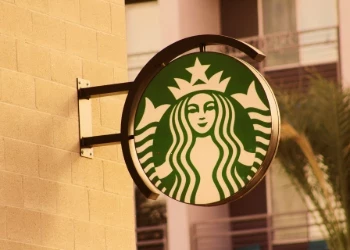How Harrods gained customer insights to boost its loyalty program
By creating a data strategy and using machine learning, Harrods was able to learn more about its customers’ behavior
Add bookmark
Britain’s most prestigious luxury department store turns 175 next year, and it has certainly seen some evolutions over the last century.
Since 2002, the store has been offering a loyalty card program to boost sales and customer retention. Much like other reward programs, it enables customers to earn points on purchases in exchange for rewards, increasing in value according to how much they spend. One thing that has changed in the last couple of years is how data on these purchases is being used to learn more about customers’ preferences.
Building a data strategy to drive customer loyalty
Speaking at Big Data LDN in September, Carys Lees, head of data strategy at Harrods, outlined how the brand transitioned towards using artificial intelligence (AI) and machine learning (ML) in 2021, in the midst of the Covid-19 lockdown, Brexit and panic-buying related supply chain issues. “These mostly affected supermarkets but had a knock-on effect on drivers,” she said. “It was chaos, but an exciting time as it was ideal to move into AI and machine learning.”
The first step was to look at the data available. “We brought data from hundreds of different sources and put it into a lakehouse, this was the foundation,” Lees said. “Previously, if you bought a Prada tote bag and then booked a haircut on the fifth floor, we wouldn’t have known you were the same person. We were able to rationalize it all and create a view of customers, with the ability to view trends and customers’ brand affinity.”
The fact that Harrods’ loyalty program has a very high penetration of its customer base certainly helped. Soon there was a data strategy, stakeholders and investment in place.
People, process and data
“Once we had data, we needed a platform,” Lees continued. A data platform by Ascent was chosen, powered by Microsoft Azure. To build it required working with Harrods’ existing infrastructure and IT team. “Then once we had the platform, it was time to look at the people who were going to use it,” Lees added.
“We made some excellent hires and we got everybody who does data science in the business moved onto this cloud stack. Our data engineers spent a lot of time with Ascent, and it worked,” Lees noted, “there was a genuine buzz in the business.”
Next they moved onto deployment, using automation and ML to minimize the long term requirements on the team. “We don’t want them to be babysitting old tech,” Lees said. “When we detect customer behaviors causing weird patterns, we spot them and train the model, then re-evaluate them. A human only needs to get involved if the re-evaluated model is out of bounds. It means the teams can focus on the value add, not the tech.”
Using customer insights to grow profitability
The team is currently working on a project to simplify orders of clothing in different sizes. “There are two six month-seasons in the year,” Lees said. “We buy stock in a range of sizes but there is an incredible financial impact to getting this wrong. If we don’t have enough of the right size and don’t meet demand, missing out on sales, that is expensive. This can also change the amount of terminal stock we have, which can be costly if we have too much of it.
“We made a big data engineering effort to rationalize sizes to extra small, small, medium, large and extra large. We found that if we pad out the extra small and extra large we get a wider distribution of sizes, so customers are more likely to find what they want. This is surprisingly simple data science, the crucial part is passing it on to the buying team for them to use it.”
Lees emphasized that the main goal of the project was to generate new business and profitability for Harrods as a whole. “The key enablers were having the right data in the right place, the right platform, the loyalty scheme, and the right people with the right skillset using it to experiment and analyze the data. But what holds it all together is automation.”
Harrods' new ecommerce platform
In October 2024, Harrods rolled out another upgrade for product information (PIM), shop management and order management systems (OMS), with further updates to its mobile app scheduled to early 2025.
Harrods' new ecommerce platform took seven months to develop and is designed to provide customers with a seamless journey across the British luxury retailer’s impressive product assortment across fashion, beauty, jewelry and watches, food and beverages, and home and living.
The luxury department store partnered with Scayle to build custom brand landing pages, develop the headless frontend, and integrate an ERP alongside all other third-party systems.
Specifically built for B2C, Scayle says its platform services allow enterprise brands and retailers such as Harrods to create CX "with ease within one unified and composable backend, aligning with Harrod’s vision to deliver an exceptional experience and service to customers across all channels globally".
Caitlin Innes, chief digital and customer officer for Harrods, said: “Harrods is committed to delivering best-in-class and engaging customer experiences, and this means choosing partners that are equally committed to innovation. We were also pleased to launch the new platform at speed, achieving a successful, seamless migration. We are excited to partner with a commerce platform that allows us to deliver the premium experiences on an increasingly global scale.”






















